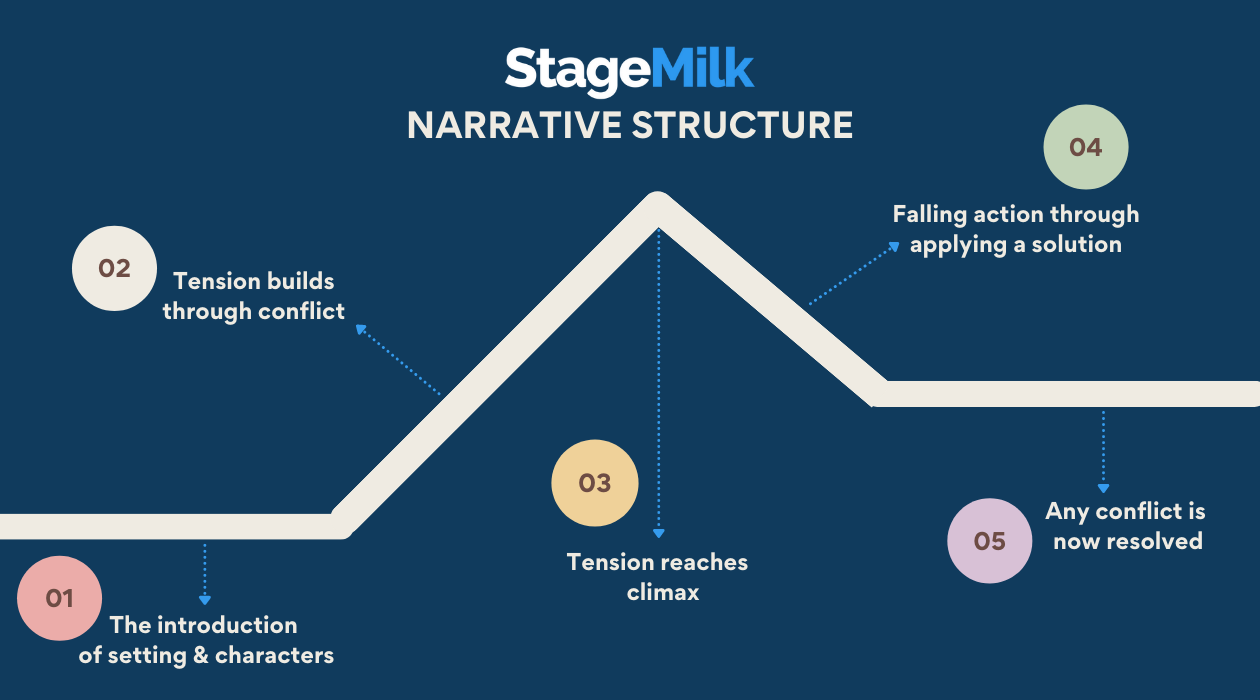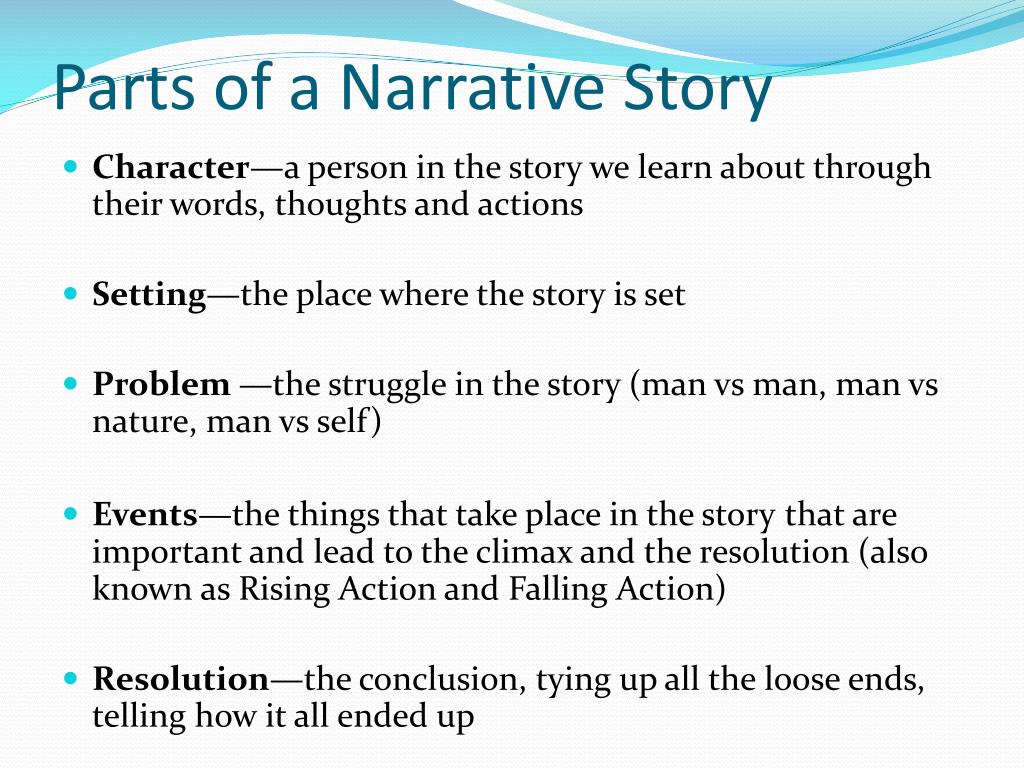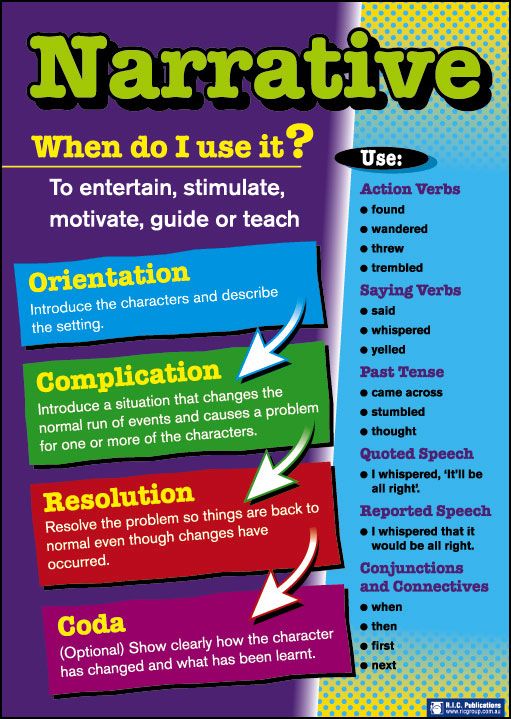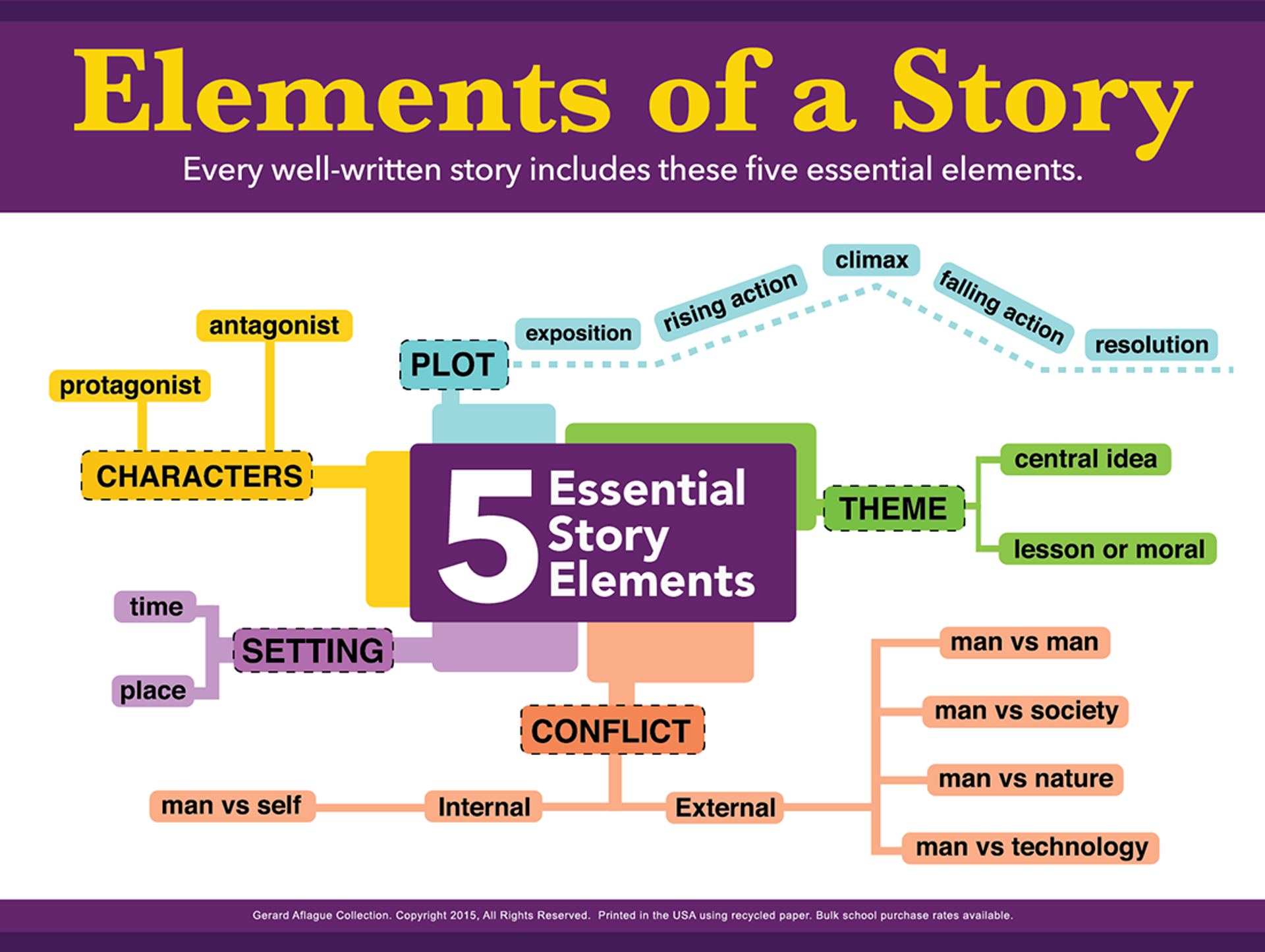Parts Of A Narrative - Learn how to craft a compelling narrative with plot, setting, characters, point of view, theme, symbolism, and conflict. Learn the definition and examples of theme, plot, characters, conflict, setting, point of view, and style in fiction. Learn how to analyze narratives by breaking them down into seven main elements: The seven key parts of a story—character development, setting, plot structure, theme, point of view, dialogue, and. Theme, plot, characters, conflict, setting, point of view, and.
Learn the definition and examples of theme, plot, characters, conflict, setting, point of view, and style in fiction. Learn how to analyze narratives by breaking them down into seven main elements: Learn how to craft a compelling narrative with plot, setting, characters, point of view, theme, symbolism, and conflict. The seven key parts of a story—character development, setting, plot structure, theme, point of view, dialogue, and. Theme, plot, characters, conflict, setting, point of view, and.
Learn how to craft a compelling narrative with plot, setting, characters, point of view, theme, symbolism, and conflict. Learn how to analyze narratives by breaking them down into seven main elements: The seven key parts of a story—character development, setting, plot structure, theme, point of view, dialogue, and. Learn the definition and examples of theme, plot, characters, conflict, setting, point of view, and style in fiction. Theme, plot, characters, conflict, setting, point of view, and.
What is Narrative Structure? Acting Tools Explained
Learn how to craft a compelling narrative with plot, setting, characters, point of view, theme, symbolism, and conflict. Theme, plot, characters, conflict, setting, point of view, and. The seven key parts of a story—character development, setting, plot structure, theme, point of view, dialogue, and. Learn the definition and examples of theme, plot, characters, conflict, setting, point of view, and style.
PPT Narrative Structure PowerPoint Presentation, free download ID
Learn the definition and examples of theme, plot, characters, conflict, setting, point of view, and style in fiction. The seven key parts of a story—character development, setting, plot structure, theme, point of view, dialogue, and. Learn how to craft a compelling narrative with plot, setting, characters, point of view, theme, symbolism, and conflict. Learn how to analyze narratives by breaking.
PPT Narrative Plot Structure PowerPoint Presentation, free download
Learn how to craft a compelling narrative with plot, setting, characters, point of view, theme, symbolism, and conflict. Learn how to analyze narratives by breaking them down into seven main elements: The seven key parts of a story—character development, setting, plot structure, theme, point of view, dialogue, and. Learn the definition and examples of theme, plot, characters, conflict, setting, point.
101 Narrative Structure Professor Ramos' Blog
Learn how to analyze narratives by breaking them down into seven main elements: The seven key parts of a story—character development, setting, plot structure, theme, point of view, dialogue, and. Learn how to craft a compelling narrative with plot, setting, characters, point of view, theme, symbolism, and conflict. Learn the definition and examples of theme, plot, characters, conflict, setting, point.
5 parts of narrative writing Narrative writing, Teaching writing
Learn how to craft a compelling narrative with plot, setting, characters, point of view, theme, symbolism, and conflict. Learn how to analyze narratives by breaking them down into seven main elements: The seven key parts of a story—character development, setting, plot structure, theme, point of view, dialogue, and. Learn the definition and examples of theme, plot, characters, conflict, setting, point.
Parts of a Story Anchor Chart * Jungle Academy Third Grade Writing
Learn the definition and examples of theme, plot, characters, conflict, setting, point of view, and style in fiction. Learn how to analyze narratives by breaking them down into seven main elements: Theme, plot, characters, conflict, setting, point of view, and. The seven key parts of a story—character development, setting, plot structure, theme, point of view, dialogue, and. Learn how to.
Parts of a story Plot Diagram Teaching plot, Teaching writing
Learn the definition and examples of theme, plot, characters, conflict, setting, point of view, and style in fiction. Theme, plot, characters, conflict, setting, point of view, and. Learn how to analyze narratives by breaking them down into seven main elements: The seven key parts of a story—character development, setting, plot structure, theme, point of view, dialogue, and. Learn how to.
Five Elements of a Story Instructional Poster
The seven key parts of a story—character development, setting, plot structure, theme, point of view, dialogue, and. Learn how to analyze narratives by breaking them down into seven main elements: Learn the definition and examples of theme, plot, characters, conflict, setting, point of view, and style in fiction. Theme, plot, characters, conflict, setting, point of view, and. Learn how to.
How to Write a Narrative Essay or Speech
Theme, plot, characters, conflict, setting, point of view, and. Learn how to craft a compelling narrative with plot, setting, characters, point of view, theme, symbolism, and conflict. Learn how to analyze narratives by breaking them down into seven main elements: Learn the definition and examples of theme, plot, characters, conflict, setting, point of view, and style in fiction. The seven.
Narrative Structure Poster Teacher Resources and Classroom Games
Learn how to analyze narratives by breaking them down into seven main elements: The seven key parts of a story—character development, setting, plot structure, theme, point of view, dialogue, and. Learn the definition and examples of theme, plot, characters, conflict, setting, point of view, and style in fiction. Learn how to craft a compelling narrative with plot, setting, characters, point.
Learn The Definition And Examples Of Theme, Plot, Characters, Conflict, Setting, Point Of View, And Style In Fiction.
Learn how to craft a compelling narrative with plot, setting, characters, point of view, theme, symbolism, and conflict. The seven key parts of a story—character development, setting, plot structure, theme, point of view, dialogue, and. Theme, plot, characters, conflict, setting, point of view, and. Learn how to analyze narratives by breaking them down into seven main elements:








:max_bytes(150000):strip_icc()/writing-topics-narration-1690539-v2_preview-5b44db5d46e0fb0037cb13e9.png)
